Product Reviews
Desklab 4K Monitor Review: The Best Portable Monitor
While traditional monitors don’t exactly fit in the average backpack, an ultralight portable monitor like the Desklab 4K does.
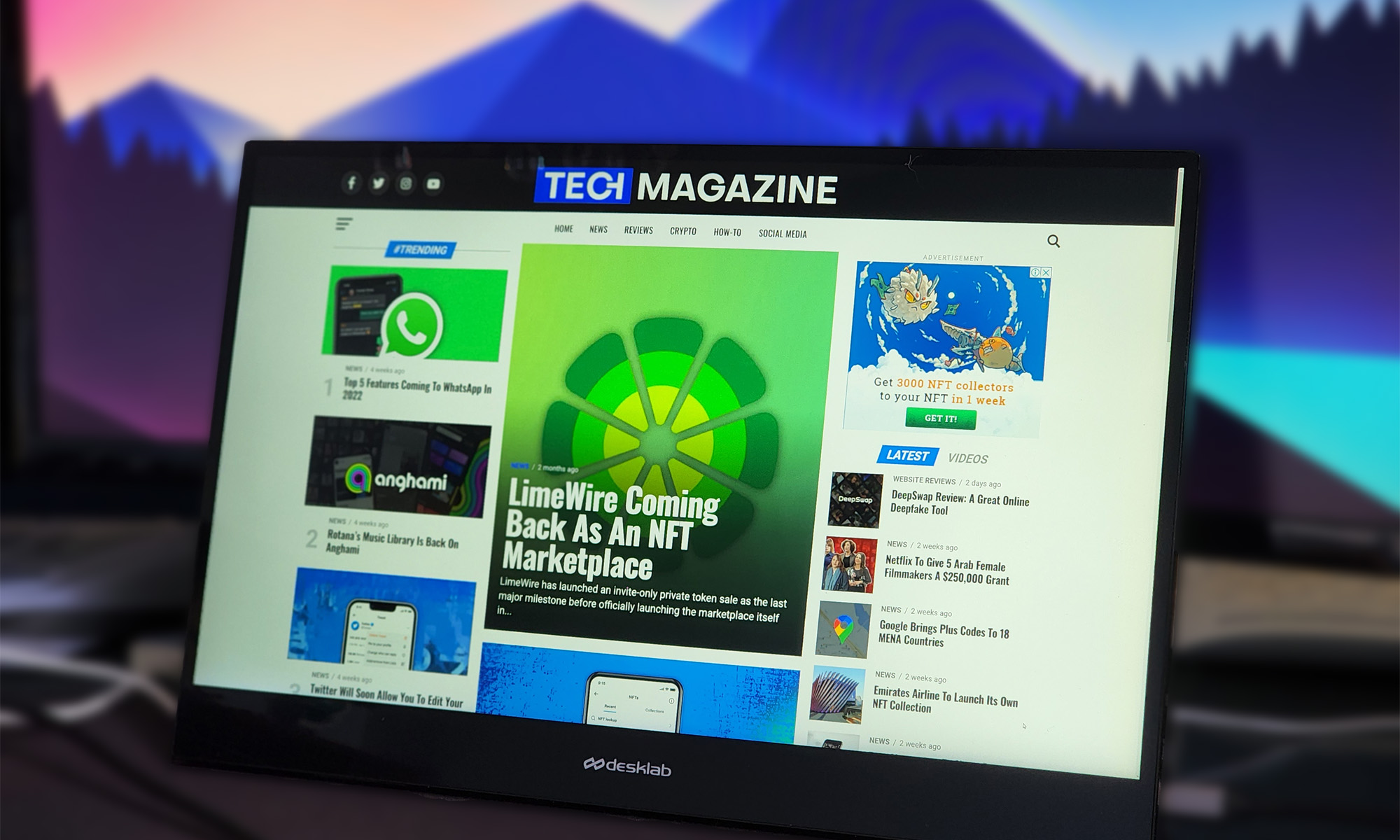
These days, work happens anywhere — from traditional offices to coworking spaces to coffee shops and airport lounges.
The only problem is that not all places where work can happen are equally equipped to support the needs of modern white-collar workers. Laptops and smartphones largely solve this issue, but their smaller screens make them less than ideal for certain tasks, such as juggling data between two spreadsheets.
While traditional monitors don’t exactly fit in the average backpack, an ultralight portable monitor like the Desklab 4K does, and remote workers are not the only group of users who can benefit from it.
Design
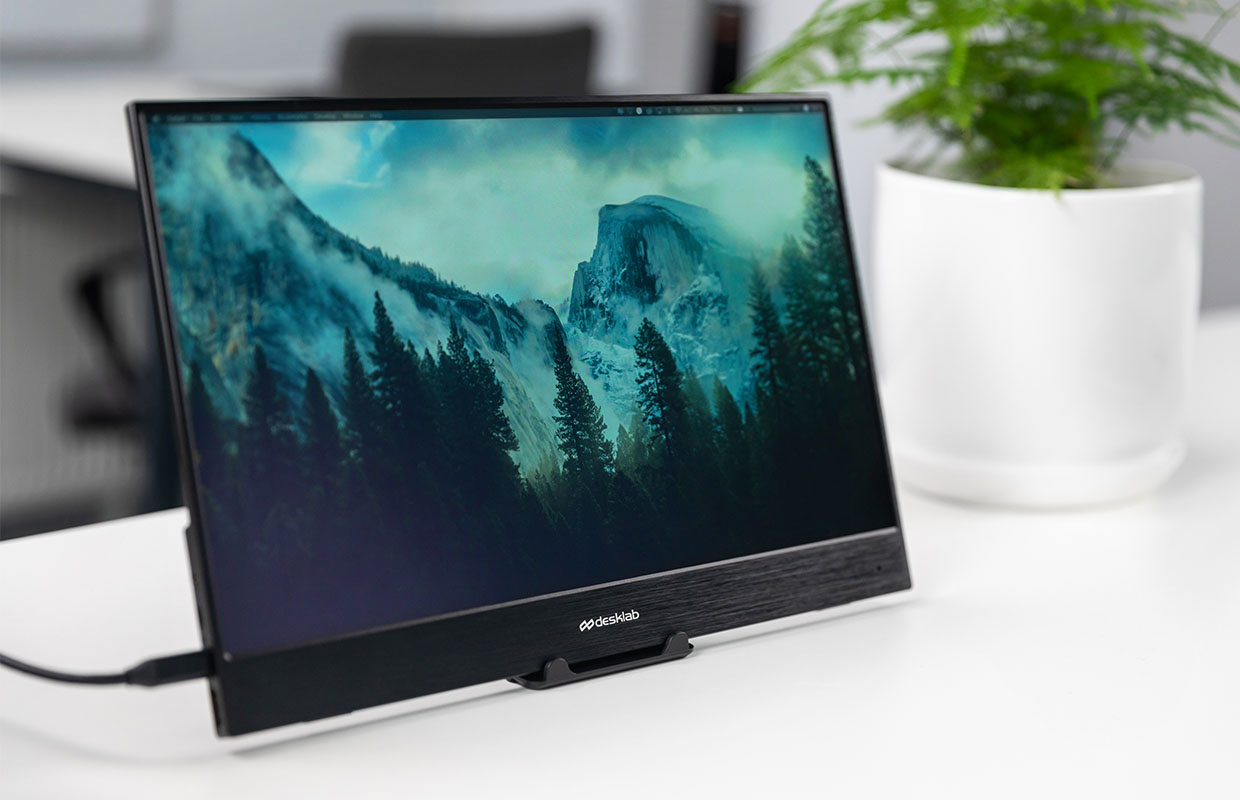
The Desklab 4K is a 15-inch large portable touchscreen monitor that weighs just 1.3 pounds (725 grams) and is slimmer than the iPad mini (0.23 inches versus 0.35 inches or 6 mm versus almost 9 mm).
On the left side, there’s a power button, control wheel, and microUSB port. The right side is where you can find a 3.5 mm port, two USB Type-C ports, and a single HDMI port.
The monitor has an integrated magnetic stand that doubles as a cover when flipped around. The stand works as advertised, allowing you to use the monitor in portable and landscape mode, but it does feel considerably cheaper than the monitor itself.
Even though portability is the main selling point of this monitor, there’s actually no battery inside the compact case. That’s because the monitor is so power-efficient that it can be powered directly by the laptop or smartphone it’s connected to.
That’s good because you don’t have to worry about charging it before use, but it also means that the battery inside the device you connect the monitor to will last much longer.
The only time when the monitor does require its own dedicated source of power is when you connect it using an HDMI cable instead of via USB Type-C, so keep that in mind if that’s how you want to use it.
Image Quality
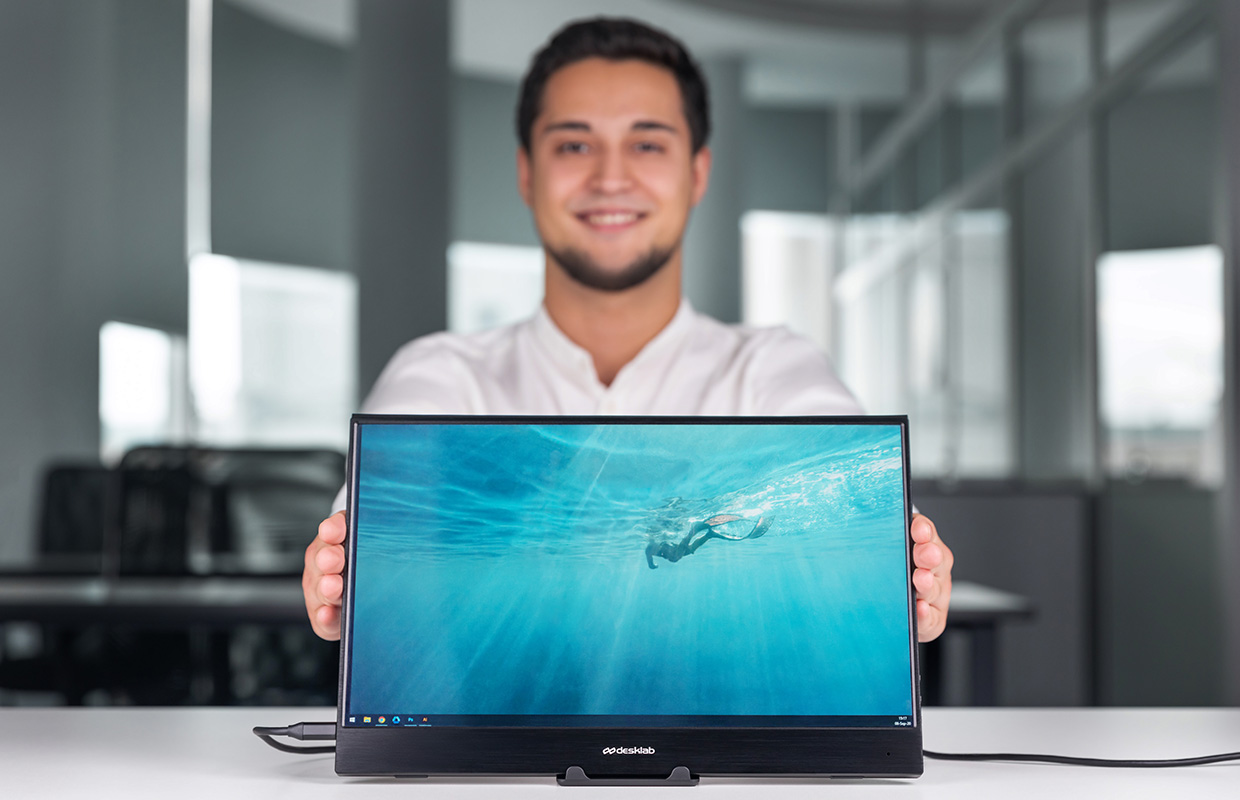
The first thing we noticed when we turned on the monitor for the first time was its sharpness. Thanks to its 4K resolution, text is perfectly smooth even when set to a small size, and the smoothness makes it easy to use the monitor for a long time without any eye fatigue.
In addition to being sharp, the monitor is also very bright. At 400 nits, it’s just as sharp as the latest MacBook Air, so using the monitor outside isn’t a problem.
If you’re into photography or graphic design, then you’ll be pleased to know that the monitor is fairly color-accurate. Sure, it’s no match for professional monitors, but its true LED backlight technology really does help with color reproduction.
Since the Desklab 4K monitor is compatible with Nintendo Switch, Xbox, PS4, and other popular video game consoles, we should also mention that the monitor has a lightning-fast 10 millisecond response time, so even fast-twitch gaming is a pleasure.
Of course, gaming on this monitor would be even more pleasurable if it supported ultra-high refresh rates, but that would make it far less efficient in terms of energy consumption. Fortunately, it does support low-flicker technology for increased comfort when using the monitor at lower brightness levels.
Compatibility
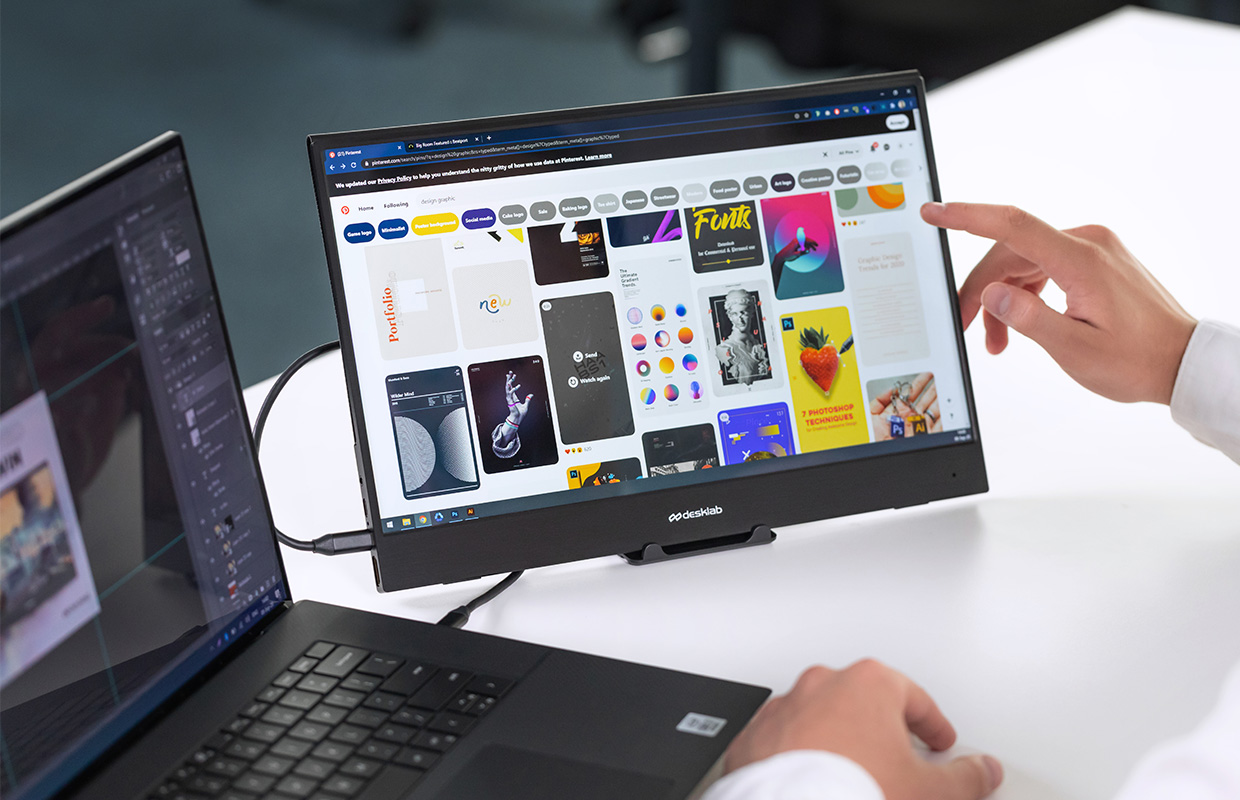
Because the Desklab 4K monitor is equipped with both USB Type-C and HDMI video inputs, you can use it with basically any device that can output 4K video.
Lower resolutions are supported as well, but image quality, and sharpness in particular, goes down considerably with them. If you want to use the monitor primary with a device that can output only 1080p video, then you should consider getting the 1080p model.
As far as setup goes, there’s really nothing to set up because the monitor doesn’t require any additional software and is designed to work as soon as you plug it in.
The Desklab 4K has a touch layer that allows you to navigate with your finger and use familiar gestures, like tap, drag, pinch, zoom, scroll, or spin. The touch layer works great even when the monitor is connected to a MacBook, which is a pleasant surprise considering that Apple has yet to release a Mac with touch support.
Technical Specifications
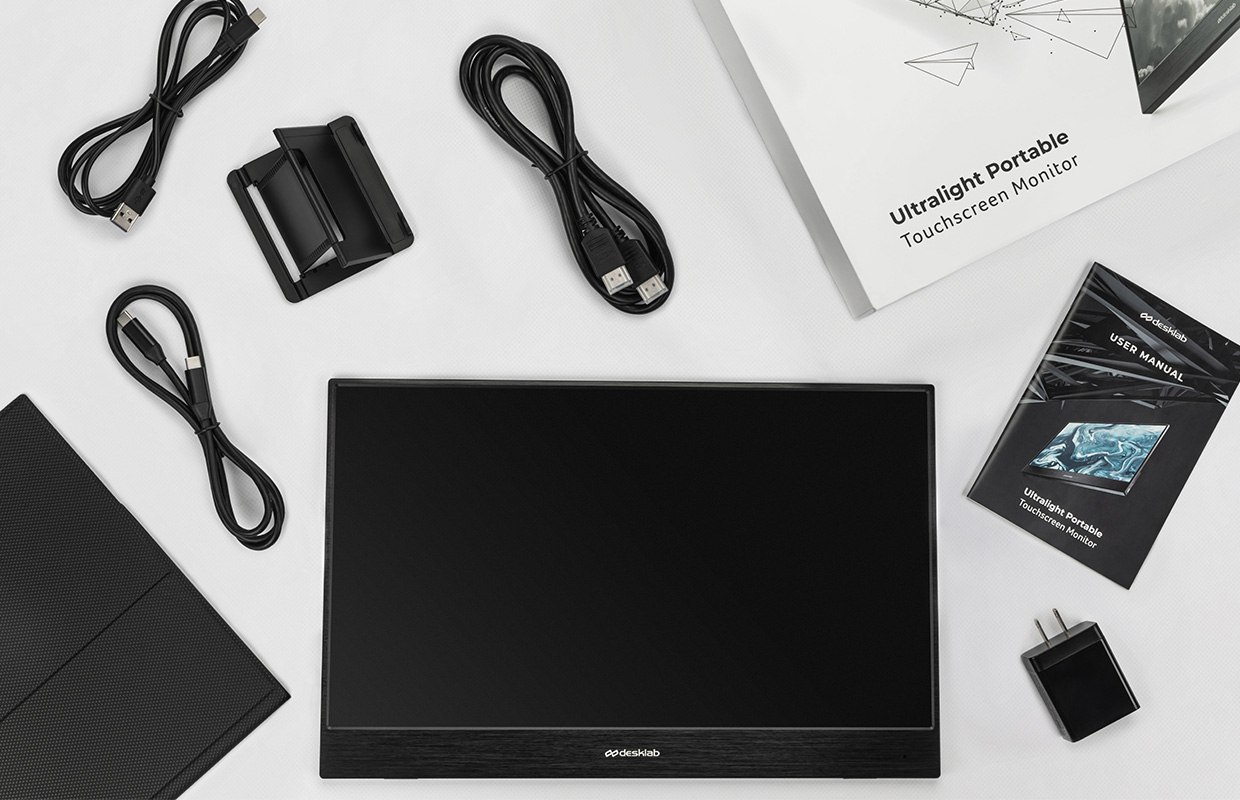
- Screen Type: IPS
- Weight: 725 grams
- Thickness: 6 mm
- Resolution: 4K (3840×2160)
- Panel Size: 15.6 inches
- Response Time: 20 milliseconds
- Ports: Type-C / mini-HDMI / Micro-USB
- Color Range: 16.7 M
- Viewing Angle: 178 degrees
- Contrast Ratio: 1200:1
Our Verdict
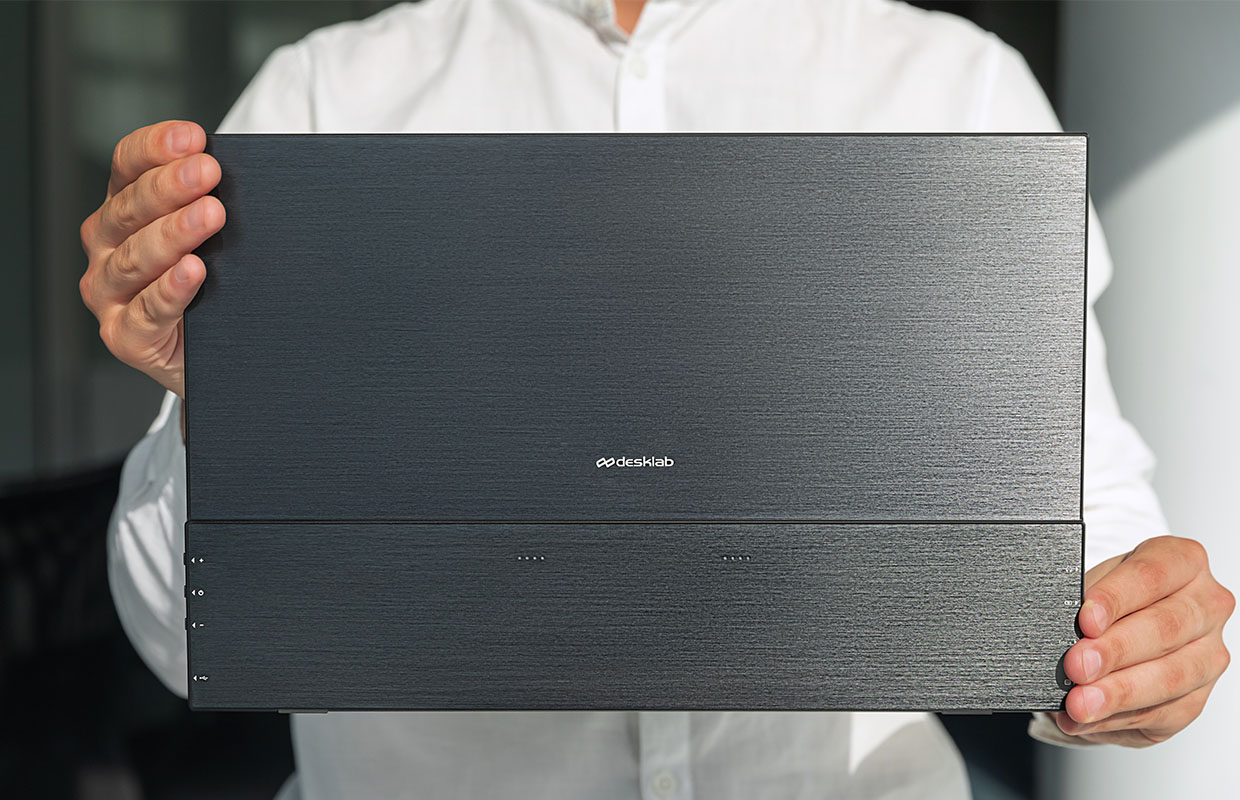
Overall, the Desklab 4K is an excellent portable monitor that’s well worth its price of $399.00. Unlike other similar monitors that you can find online for less money, the Desklab 4K is bright enough to be usable outside, and it does have plenty of other features that make it suitable for regular use.
Also Read: Fakespot Review: Easily Identify Fake Online Reviews
The two things we don’t like the most about this monitor (the poorly designed on-screen menu and the flimsy stand) could certainly be improved, but they’re definitely not huge issues that would make you regret your purchase. You can get your Desklab 4K portable monitor directly from the company on their official website.

Product Reviews
UGREEN Nexode Pro Review: Portable Yet Powerful Chargers
The UGREEN Nexode Pro line of chargers shows that charging doesn’t have to be a hassle — you just need the right equipment.
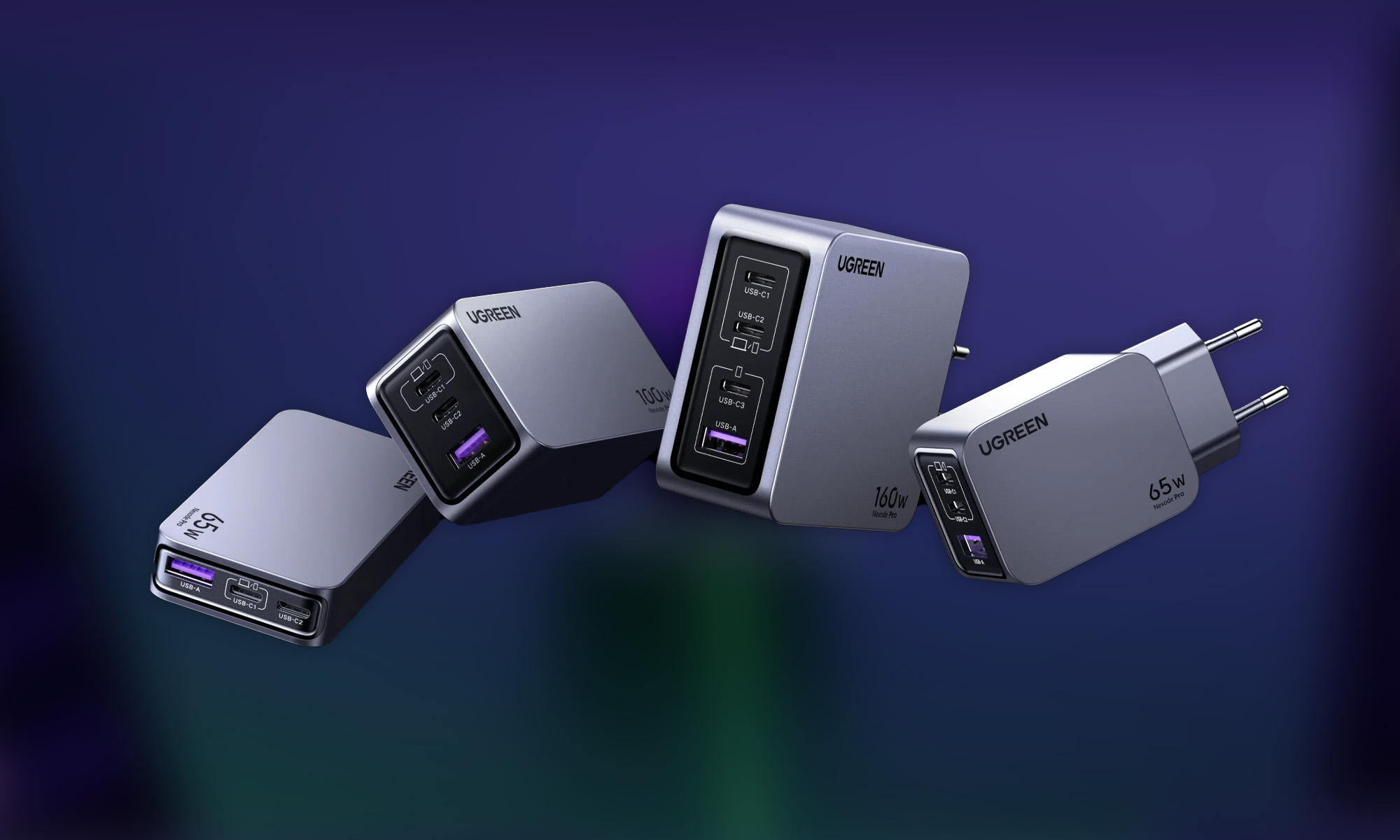
The adoption of the USB-C port by almost every device manufacturer has significantly simplified our charging needs by eliminating the hassle of carrying a plethora of cables. At the same time, it has introduced a layer of complexity with the advent of various fast charging protocols, which require specific power outputs to maximize charging efficiency.
Fortunately, there are companies like UGREEN and its Nexode Pro line of chargers, whose efficient use of the GaN II charging technology demonstrates that in the world of charging, much like in many areas of life, it’s not the size that counts, but how you use it.
Who Is UGREEN?
Established in 2012, UGREEN specializes in providing distinguished accessories and digital solutions for global consumers. UGREEN has steadily grown into a trustworthy brand with over 40 million users worldwide, providing products ranging from charging devices, phone, and computer accessories to home and automobile accessories.
A Charger For Every Occasion
The UGREEN Nexode Pro line of chargers consists of four compact yet powerful models.
Whether you’re prioritizing mobility, handling heavier laptops, or managing a whole arsenal of devices, there’s a Nexode Pro to fit seamlessly into your life.
| Nexode Pro 65W 3-Port GaN Mini Fast Charger | Nexode Pro 65W 3-Port Slim GaN Mini Fast Charger | Nexode Pro 100W 3-Port GaN Wall Fast Charger | Nexode Pro 160W 4-Port GaN Wall Fast Charger | |
| Ports: | 2x USB-C, 1x USB-A | 2x USB-C, 1x USB-A | 2x USB-C, 1x USB-A | 3x USB-C, 1x USB-A |
| Power Output: | Up to 65W | Up to 65W | Up to 100W | Up to 160W |
| Ideal For: | Mobile phones, tablets, laptops | Mobile phones, tablets, laptops (travel) | Laptops, mobile phones, tablets | Laptops, mobile phones, tablets |
| Design: | Compact | Ultra-Slim | Compact | Compact |
| Availability: | Available Now | May 2024 | Available Now | Available Now |
Let’s explore the individual options:
Nexode Pro 65W 3-Port GaN Mini Fast Charger
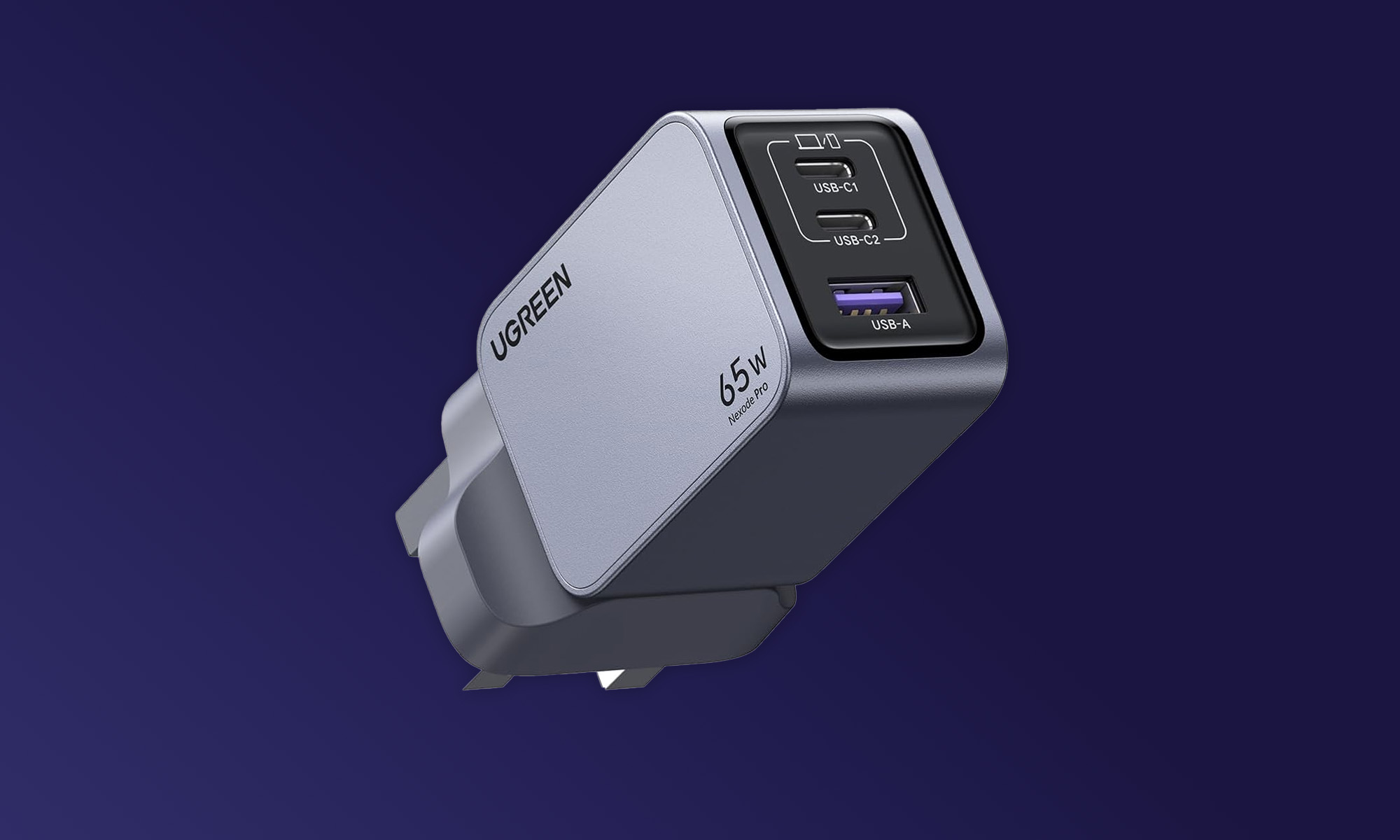
This charger has become my go-to option for fast-charging smartphones, tablets, and even smaller laptops. It packs incredible power density with its two USB-C ports and a single USB-A port to manage all your mobile essentials. When using a single port, you get the full 65W output, and the max single-port output remains pretty good (45W) even in multi-port scenarios.
Nexode Pro 65W 3-Port Slim GaN Mini Fast Charger
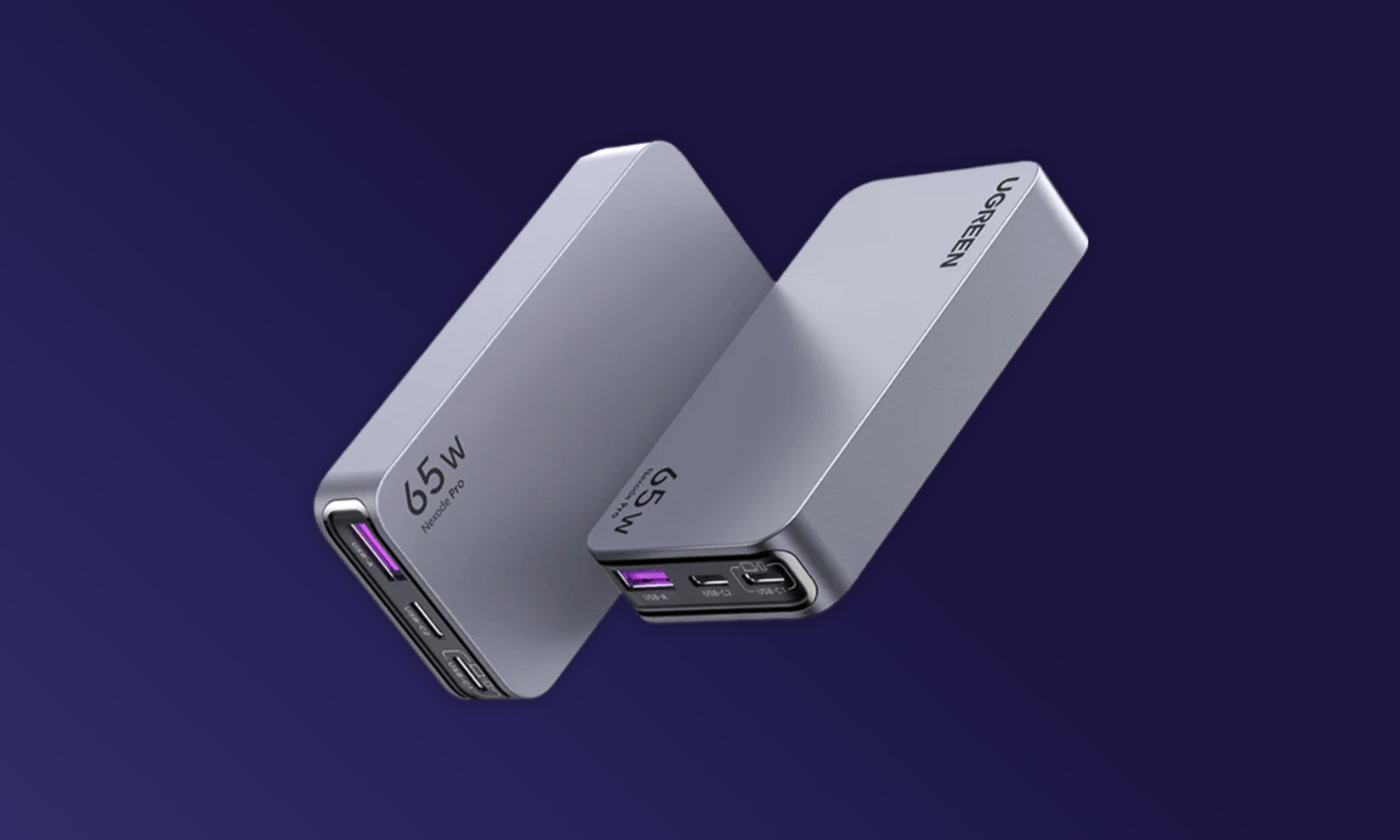
If you seek extreme portability, look no further. The flat profile of this Nexode Pro slips into any bag’s side pocket or laptop sleeve effortlessly. Just like the regular Nexode Pro 65W, it features three ports: two USB-C and one USB-A, providing the flexibility to charge multiple devices simultaneously. Another benefit of the slim design of this charger is that it prevents that annoying “droop” you get from some heavy chargers in loose outlets. The Slim model is expected to be available by mid-May.
Nexode Pro 100W 3-Port GaN Wall Fast Charger
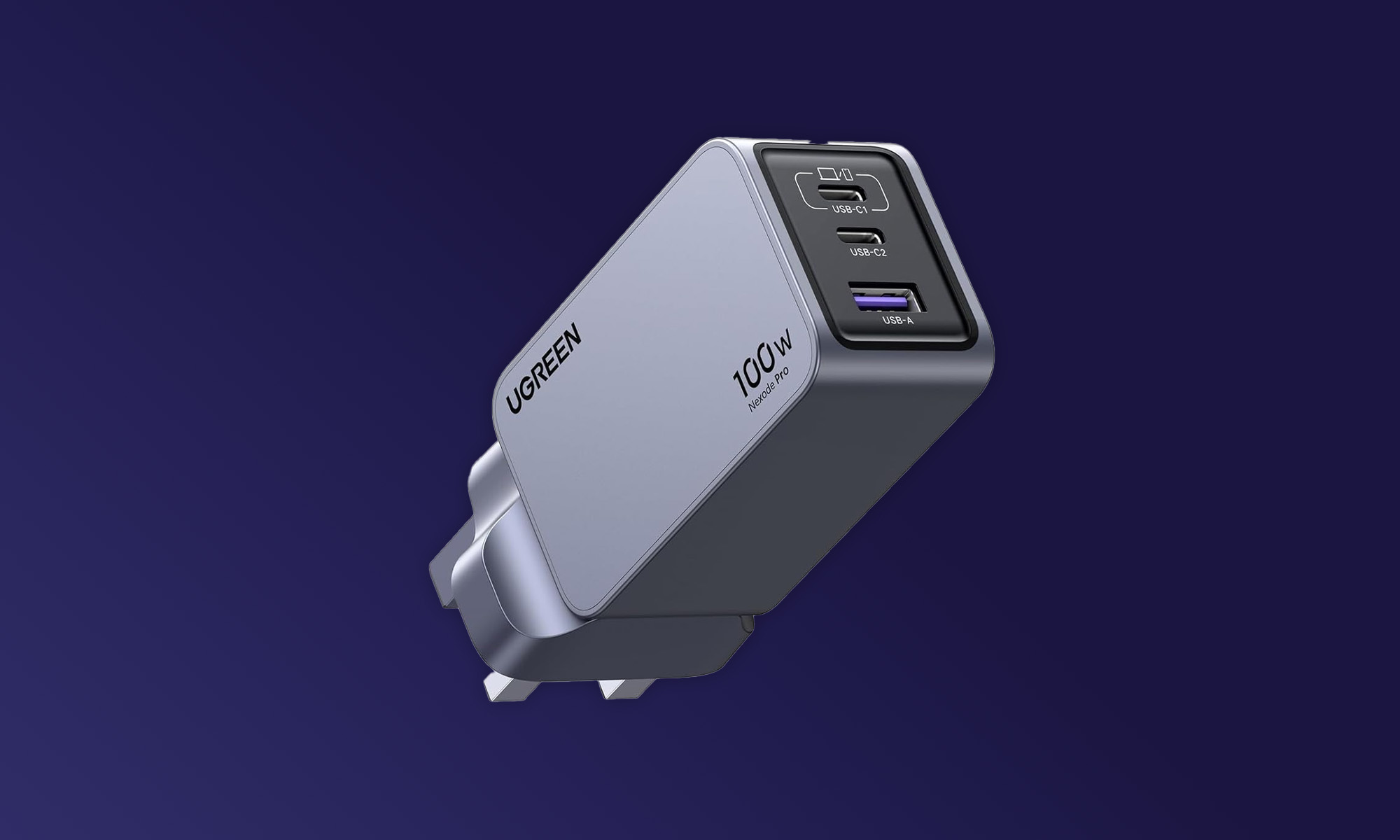
The Nexode Pro 100W 3-Port GaN Fast Charger is an all-rounder that doesn’t fail to impress with its balance of power and portability. Thanks to its 100W output, you can fast-charge a MacBook plus up to two mobile devices at the same time from its two USB-C ports and one USB-A port. The intelligent power distribution guarantees that all devices get the right amount of power at the right time.
Nexode Pro 160W 4-Port GaN Wall Fast Charger
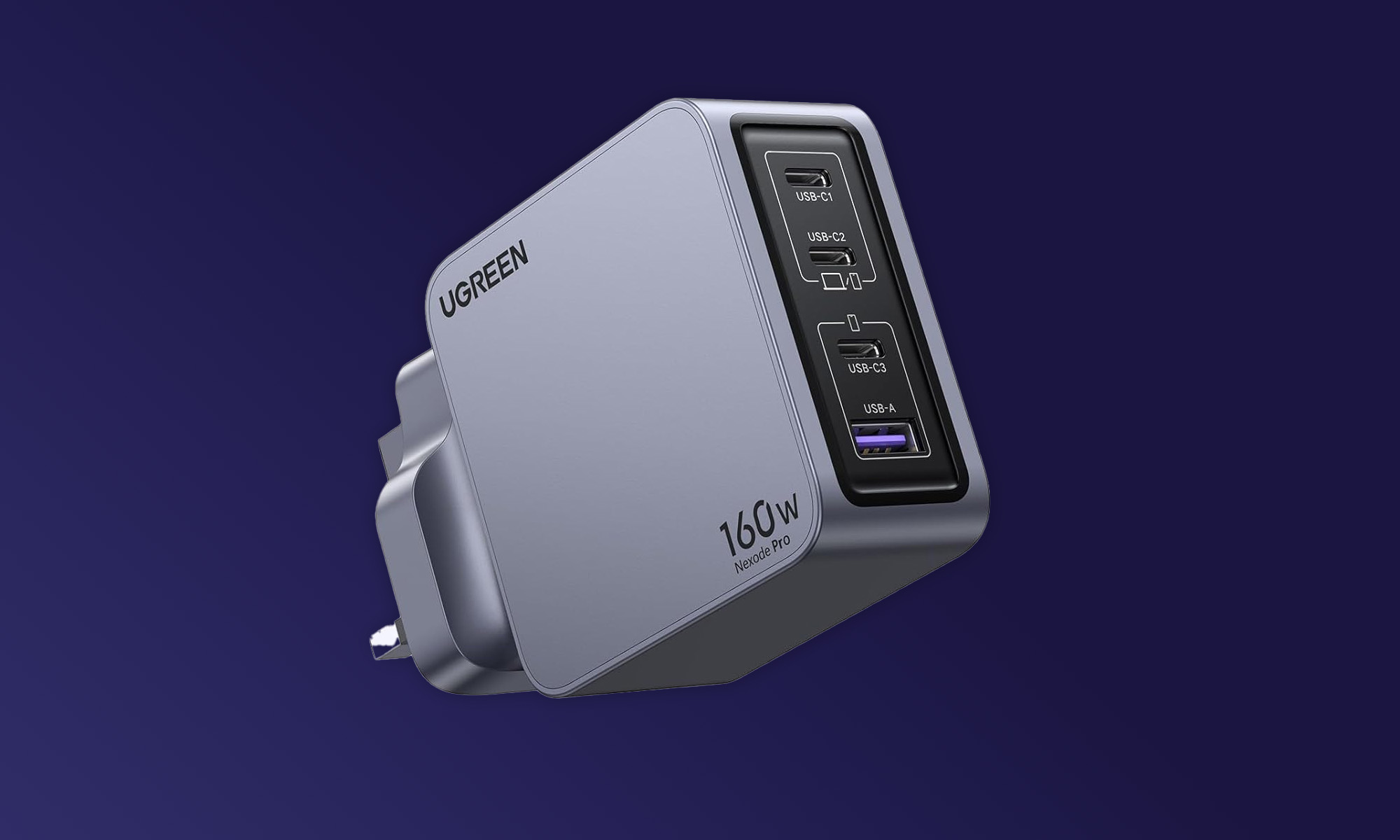
Finally, the Nexode Pro 160W 4-Port GaN Fast Charger is the powerhouse of the bunch. With a peak output of 160W and four ports, you can juice up two laptops alongside two more gadgets without breaking a sweat. The maximum single-port output of this charger is 140W, so the charger is a great choice for professionals, gamers, and tech enthusiasts who need to keep multiple high-power devices charged and ready at a moment’s notice.
Features And Performance
At the heart of every Nexode Pro charger is GaN II technology. To keep it simple, Gallium nitride (GaN) is a next-generation semiconductor material rapidly replacing the traditional silicon found in older chargers.
It revolutionizes charger design for a few reasons. First, GaN allows chargers to shrink without sacrificing power output. Second, it’s far more efficient at transferring energy, so less is wasted as heat. It’s the reason I can comfortably toss a high-output Nexode Pro model in my bag without ever worrying about things getting toasty.
Another hallmark of the Nexode Pro series is the comprehensive protection against over-voltage, over-temperature, and short circuits built into every charger. It’s a relief knowing that these devices are working intelligently to safeguard my valuable electronics from common dangers that can lead to terribly costly charging accidents.
As far as the performance of the Nexode Pro line of chargers goes, each of the four charges shines in its own way. The two 65W models in the Nexode Pro line might not sound overly impressive, they still pack a good punch. If I plug a single device into the right port, the charger dishes out the full 65W. That translated to bringing my almost drained MacBook Air 13″ M2 to a comfortable 51% battery in roughly 30 minutes.
The 100W option steps up the game considerably. I’ve found it’s the perfect balance when needing to keep a laptop powered while charging other devices. It effortlessly brought my MacBook Pro 14″ to 50% charge within 27 minutes. You really appreciate those watts when a demanding workload is draining your laptop faster than a budget charger can keep up, or when you find out that your battery is nearly empty right before an important presentation.
Charging a MacBook Air from 0% to 50% in around 30 minutes is great, doing the same with MacBook Pro is impressive, and being able to bring a 16-inch MacBook Pro to half charge in the same timeframe is absolutely phenomenal. That’s exactly what the 160W model is capable of if you take full advantage of its 140W PD 3.1 fast charging capability. What’s more, the charger is able to output up to 100W from its USB-C port even in all two-port and some three-port charging scenarios.
Pricing
Let’s address the elephant in the room: The UGREEN Nexode Pro lineup leans towards the premium side of the charger market. The priciest of the bunch, the slim 65W charger, demands a particularly hard look as the power output limitations don’t fully justify the cost in my opinion.
Here’s the breakdown of the regular MSRP (non-discounted) prices:
- Nexode Pro 65W 3-Port GaN Mini Fast Charger: $55.99
- Nexode Pro 65W 3-Port Slim GaN Mini Fast Charger: $119.99
- Nexode Pro 100W 3-Port GaN Fast Charger: $74.99
- Nexode Pro 160W 4-Port GaN Fast Charger: $119.99
It’s worth noting that discounts are regularly available on UGREEN’s website and through other retailers, potentially softening the blow to your wallet.
This ultimately raises the question of value. While there’s no denying the performance and quality of the Nexode Pro chargers, you need to decide if the extra cost aligns with your priorities and budget. If keeping your devices protected and maximizing charging efficiency are major factors, the quality might well justify the expense.
Verdict
I’ve been thoroughly impressed with the UGREEN Nexode Pro chargers during my testing period. They provide the flexibility and raw power required by today’s tech-heavy lifestyles. However, premium features come at a premium price. While more affordable GaN charging alternatives exist, they might lack the same polish and robust protection suites built into the Nexode Pro line.
Pros:
- Compact form factor (even the most powerful 160W model)
- Blazing-fast charging speeds and smart charge distribution
- Built-in safeguards protect your valuable devices
- Flexible charging options for various device setups
Cons:
- Pricier than some similarly-specced competitors
Ultimately, if you value reliable performance, advanced protection, and the freedom to charge numerous devices with ease, the UGREEN Nexode Pro chargers might be well worth the investment. If budget is a greater concern, there are solid but less advanced alternatives to consider.






















Chris Gardner
May 23, 2022 at 8:28 AM
I appreciate your review, and after ordering one of these monitors, I think that I’ve been scammed. The company will not respond to my e-mail requests, nor will they answer their phone. Are you aware of any serious problems with this company? I’m really having a bad feeling about this right now. I ordered my monitor on the 5th of May and paid for expedited shipping. It’s May 23 now, and no e-mails, phone calls, or anything.